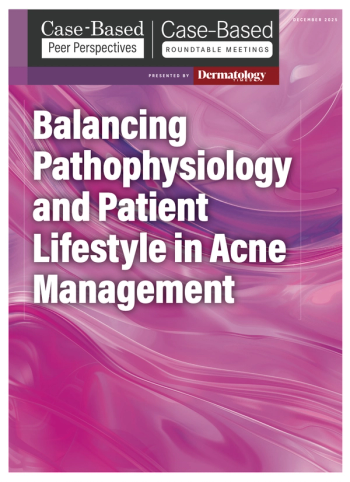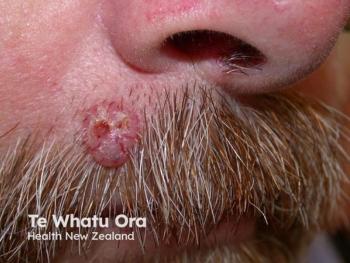
Ethanol-Based Hand Sanitizer Shows No Visible Dermal Toxicity; Further Testing Warranted
Key Takeaways
- EBHS showed no visible dermal toxicity in rat models, but histopathology revealed subclinical dermatitis signs, questioning current testing guidelines' sensitivity.
- OECD guidelines TG 402 and TG 410 may not detect subtle changes, especially with aqueous formulations and occlusive dressings, potentially confounding results.
Ethanol-based hand sanitizer showed no visible skin toxicity in rats, but subclinical dermatitis raised concerns about dermal test guideline adequacy.
Ethanol-based hand sanitizer (EBHS) did not produce visible signs of skin irritation or systemic toxicity in rat models, according to a study published in Annals of Medicine.1
However, histopathologic findings revealed consistent signs of subclinical dermatitis, prompting researchers to question the adequacy of current dermal toxicity testing guidelines.
Background and Methods
The Organisation for Economic Co-operation and Development (OECD) provides internationally accepted guidelines for the safety evaluation of chemicals, including dermal toxicity assessments. For skin exposure, OECD Test Guideline (TG) 402 outlines protocols for evaluating acute dermal toxicity, typically involving a 1-time application of a test substance to shaved animal skin, followed by 14 days of observation to determine lethality and irritation potential.2
In contrast, OECD TG 410 addresses subacute (repeated-dose) dermal toxicity, recommending daily application of the test substance over a 28-day period, with clinical monitoring, body weight tracking, necropsy, and histopathological analysis to detect systemic or local skin effects.3
While these guidelines offer standardized approaches, authors Palkhade et al note they may lack sensitivity to subtle or subclinical changes, particularly when evaluating aqueous-based formulations or when occlusive dressing is required for exposure maintenance, which may confound results.
The present study aimed to assess the dermal safety of a commercially available EBHS containing 72.3% ethanol using standardized OECD protocols TG 402 and TG 410.
In the TG 402 phase, 2 female Sprague Dawley rats received a single dermal dose of 2000 mg/kg applied to 10% of their body surface area and monitored over 14 days. The TG 410 portion included 100 rats (50 males, 50 females) divided into 5 groups receiving daily EBHS applications at doses ranging from 500 to 1000 mg/kg for 28 days.
Researchers monitored animals for clinical signs of irritation, systemic toxicity, behavioral changes, and body weight shifts.
Findings
Across both acute and subacute phases, no rats developed visible signs of erythema, edema, eschar, or systemic toxicity.
One rat in the 750 mg/kg subacute group died due to internal hemorrhage, though necropsy findings ruled out a link to EBHS exposure.
Despite normal outward skin appearance, histological examination revealed consistent subclinical changes across treatment groups. These included:
- Hyperkeratosis
- Parakeratosis
- Epidermal erosion
- Spongiosis (intercellular edema)
- Perivascular dermal inflammation
These changes were observed regardless of dosage and time frame, raising concerns about confounding effects from the aqueous vehicle and occlusive dressing used in accordance with OECD protocols.
Study authors emphasized the disparity between clinical and microscopic findings, highlighting the need to revise existing OECD guidelines. TG 402 does not require untreated or vehicle control groups, limiting the ability to determine whether histologic changes result from the test substance or the occlusive/wet application method itself.
Researchers noted that repeated hydration of the skin, combined with semi-occlusive dressings, can independently cause spongiotic dermatitis patterns, calling into question the relevance of such effects in determining test substance toxicity.
Conclusions
While EBHS demonstrated no visible dermal toxicity and qualifies as non-irritant under current regulatory definitions, the study highlights potential challenges with existing dermal toxicity testing frameworks.
"Methodological limitation of absence of control group/animal in acute dermal toxicity study makes it difficult to attribute microscopic changes to ethanol present in EBHS. Clinico-pathological discordance also further complicated the study," wrote study authors Palkhade et al. "In such scenario, we conclude that, aqueous base solutions require a different methodological approach for dermal toxicity studies, and with conventional methodology results can be inconclusive."
References
- Palkhade R, Sammal D, Parmar J, Chavhan S. Methodological limitations and confounders in dermal toxicity evaluation of aqueous test substance by OECD technical guidelines 402, 410: our experience of testing ethanol based hand sanitizer. Ann Med. 2025 Apr 17;57(1):2491664.
doi:10.1080/07853890.2025.2491664 . PMCID: PMC12006945. - Test no. 402: Acute dermal toxicity. OECD Publishing; 2017. Accessed July 10, 2025.
https://www.oecd-ilibrary.org/environment/test-no-402-acute-dermal-toxicity_9789264070585-en - Test no. 410: Repeated dose dermal toxicity: 21/28-day study. OECD Publishing; 1981. Accessed July 10, 2025.
https://www.oecd-ilibrary.org/environment/test-no-410-repeated-dose-dermal-toxicity-21-28-day-study_9789264070806-en
Newsletter
Like what you’re reading? Subscribe to Dermatology Times for weekly updates on therapies, innovations, and real-world practice tips.


















